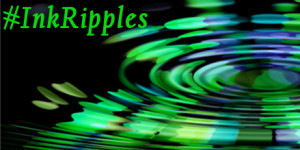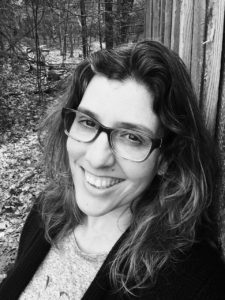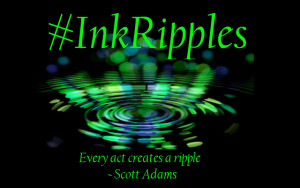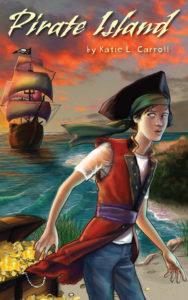LA Dragoni is here to celebrate the release of her time travel romance AGAIN, FOR LOVE. Speaking of love, I love the Matrixy look of this cover. Let’s give LA a big welcome!
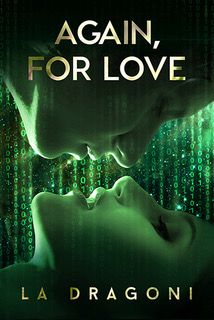 Even a fiction author has to do her research. And for my newest book, Again, For Love, a time travel romance, I’ve been doing years of research. And no, I haven’t been time travelling.
Even a fiction author has to do her research. And for my newest book, Again, For Love, a time travel romance, I’ve been doing years of research. And no, I haven’t been time travelling.
I originally got this idea for a book about twenty years ago! I thought it would be cool for a guy who has a crush on a co-worker to save her by time traveling to avoid her death. I started to write it, but I just didn’t get that far. It was stale and boring and I wasn’t an experienced author who could figure out what was missing.
Fast forward to 2016. I read The Troublemaker Next Door by Marie Harte and suddenly I knew what was missing. Her characters are full of sass and snark and chemistry. Honestly, I hadn’t thought about Again, For Love in years, but as soon as I finished reading her book I knew I needed to pull that manuscript out of the cobwebs.
I had originally put the co-workers in an office environment. Yawn. Clearly, to obtain sass and snark, I had to take them out of the office and put them…where? That’s when my years of research came in handy.
I live in a craft beer mecca. Bend, Oregon holds a lot of “best of” titles and many of them have to do with the sheer number of breweries we have, and their success. I’ve been visiting these breweries and enjoying their beers and developing a discerning palette for years. Yet I’ve never actually worked in a brewery. But I’ve toured them. I learned about the beer making process. Different ingredients, methods of aging, bottling…all sorts of things. Then I toured them again. This time I ignored the knowledgeable tour guide and stalked the workers. Watching them move about, interact with each other, heft, direct, etc. When I developed what I hoped was a passible knowledge of what it’s like to work in a brewery I had to do a little (read a lot) more research on the beer itself.
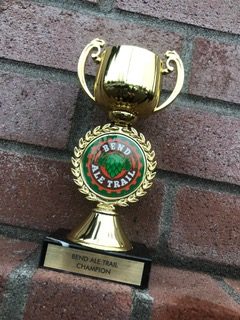 Luckily, here in Bend, Oregon, we have the largest ale trail in the west. My husband and I frequently host friends and family who come to Bend simply to experience the ale trail. I’ve tasted so much beer, I have a trophy! My favorite beer is a winter ale on nitro. I know I don’t like pilsners, I’m always willing to try a new red ale or a stout. It was so much fun being able to weave this knowledge into my story. I hope I’ve represented the craft brewing world well.
Luckily, here in Bend, Oregon, we have the largest ale trail in the west. My husband and I frequently host friends and family who come to Bend simply to experience the ale trail. I’ve tasted so much beer, I have a trophy! My favorite beer is a winter ale on nitro. I know I don’t like pilsners, I’m always willing to try a new red ale or a stout. It was so much fun being able to weave this knowledge into my story. I hope I’ve represented the craft brewing world well.
Book Blurb:
A life must be lost. Who will make the ultimate sacrifice?
Lawson lives a simple life: a job at a brewery, and his basketball and hockey leagues. Even his eccentric lifelong friend and roommate—who is intent on discovering time travel—doesn’t complicate things. Then Jory appears. Lawson feels an immediate attraction to her, yet their attempts at dating end with him thinking it just isn’t meant to be. But Jory refuses to give up.
When one date ends tragically, Lawson turns to his best friend and the experimental time travel program he’s invented. But, no matter what he does, each time the reset ends with a loss.
It’s clear…a life must be lost, and Lawson is prepared to give his for Jory. But he isn’t the only one playing with time.
Will he spare Jory by forfeiting his own life? Or will someone else make the ultimate sacrifice?
Buy now:
Amazon| Barnes & Noble| iTunes| add on Goodreads
About the Author:
LA Dragoni isn’t too particular about who fallsin love or where they fall in love. She simply considers it her job to capture the story about their love. Whether it’s paranormal, mythical, or time travel, LA will be there to divine their story for you. She lives in Central Oregon with her husband and children, but haunts ghost towns and cemeteries up and down the west, in search of the next adventure to sift through her storytelling brain. Learn more about LA and her work at www.ladragoni.com
